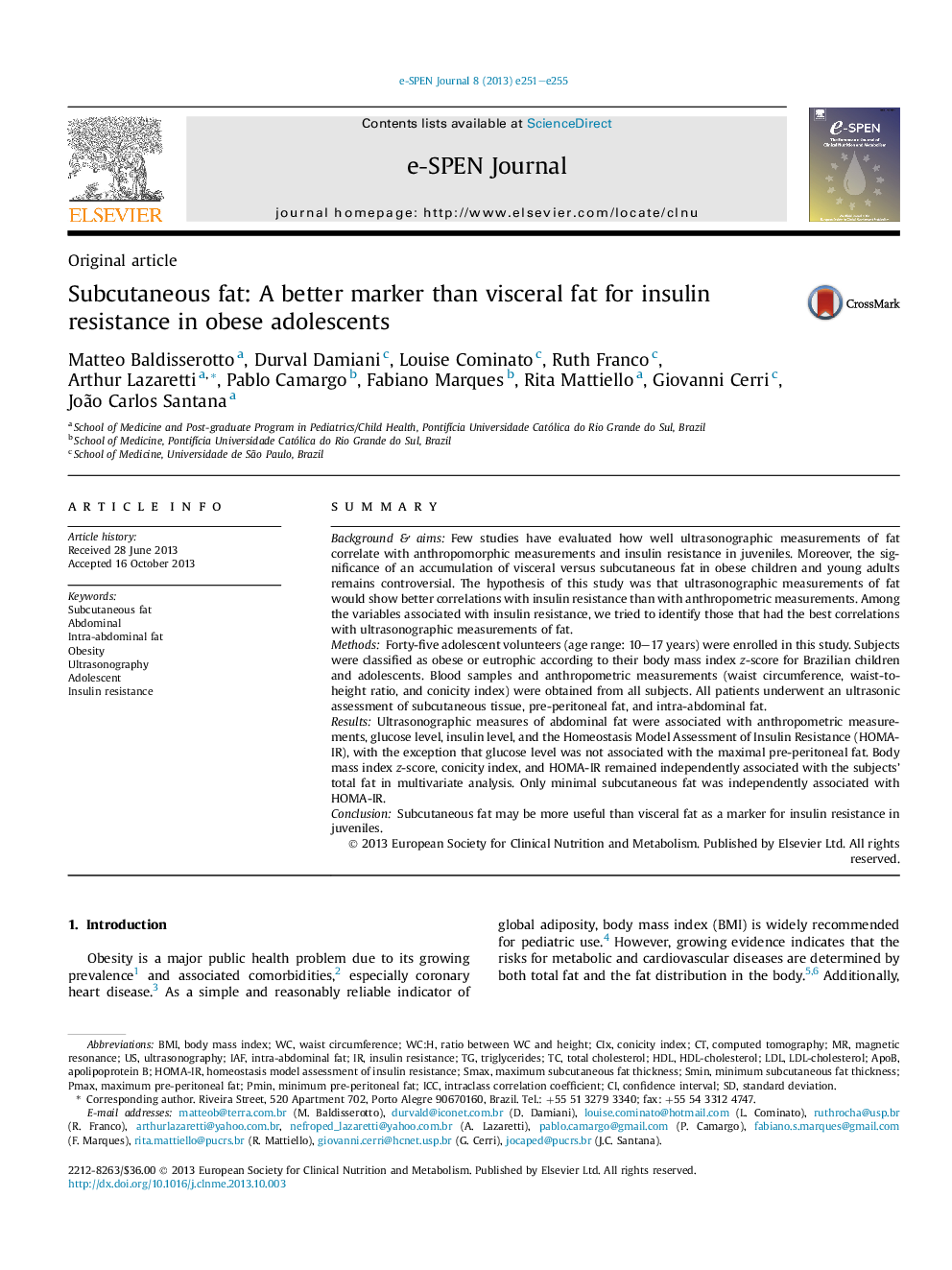| Article ID | Journal | Published Year | Pages | File Type |
|---|---|---|---|---|
| 2685786 | e-SPEN Journal | 2013 | 5 Pages |
SummaryBackground & aimsFew studies have evaluated how well ultrasonographic measurements of fat correlate with anthropomorphic measurements and insulin resistance in juveniles. Moreover, the significance of an accumulation of visceral versus subcutaneous fat in obese children and young adults remains controversial. The hypothesis of this study was that ultrasonographic measurements of fat would show better correlations with insulin resistance than with anthropometric measurements. Among the variables associated with insulin resistance, we tried to identify those that had the best correlations with ultrasonographic measurements of fat.MethodsForty-five adolescent volunteers (age range: 10–17 years) were enrolled in this study. Subjects were classified as obese or eutrophic according to their body mass index z-score for Brazilian children and adolescents. Blood samples and anthropometric measurements (waist circumference, waist-to-height ratio, and conicity index) were obtained from all subjects. All patients underwent an ultrasonic assessment of subcutaneous tissue, pre-peritoneal fat, and intra-abdominal fat.ResultsUltrasonographic measures of abdominal fat were associated with anthropometric measurements, glucose level, insulin level, and the Homeostasis Model Assessment of Insulin Resistance (HOMA-IR), with the exception that glucose level was not associated with the maximal pre-peritoneal fat. Body mass index z-score, conicity index, and HOMA-IR remained independently associated with the subjects' total fat in multivariate analysis. Only minimal subcutaneous fat was independently associated with HOMA-IR.ConclusionSubcutaneous fat may be more useful than visceral fat as a marker for insulin resistance in juveniles.
